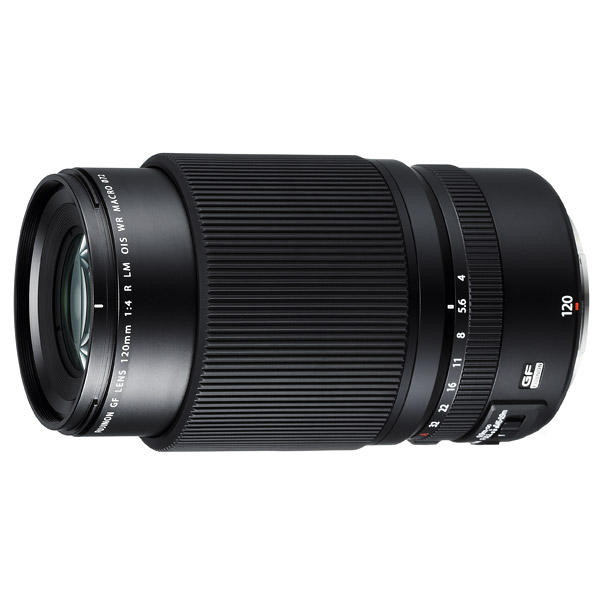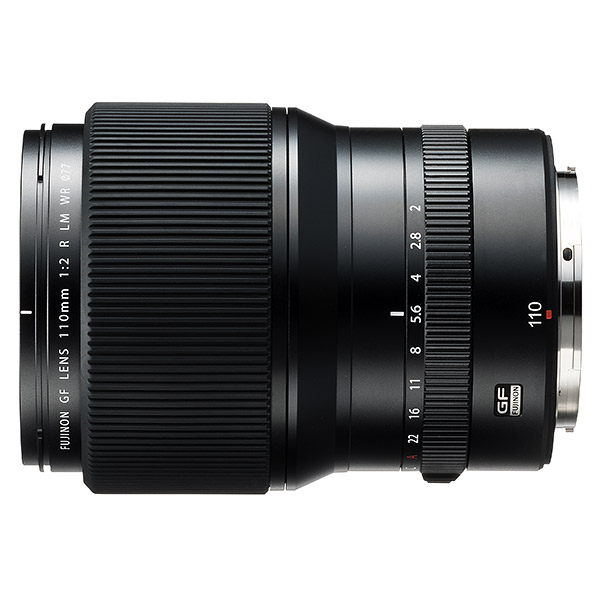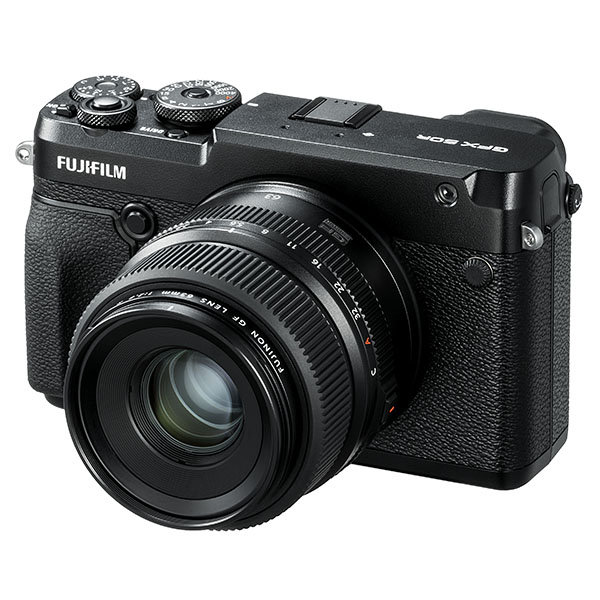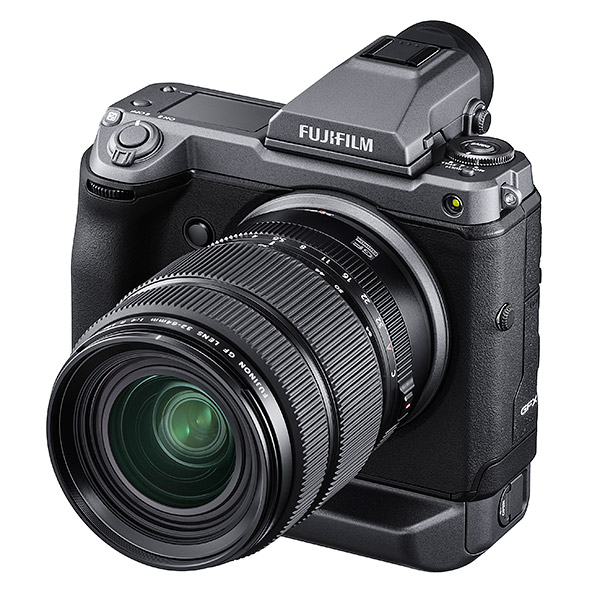
|
| Accept Cookies | Customize | Refuse Cookies |
Jonasalsgard www.juzaphoto.com/p/Jonasalsgard  |
 | Fujifilm GF 120mm f/4 R LM OIS WR Macro Pros: In Still Life it is able to discreetly solve the 102MP of the GFX 100 when used on tripods with OFF stabilizer and deabrated between 8 and 11, possibly using the Focus Bracketing function to extend the sharp zone. Cons: Very slow and inaccurate autofocus, even with the GFX 100, especially when the light is not particularly intense, for example with flash pilot lamps. It is very frustrating when you see that autofocus is going the wrong way and you can do nothing about it, other than waiting for it to come back at the end of the race, which in portraiture often means losing the fleeting moment, especially with spontaneous and non-professional subjects (models). In these situations the autofocus of the GF110 is much better, especially with static subjects, probably due to the difference of 2 diaphragm stops. This is not a problem in Still Life with tripod device and motionless subject, where I prefer manual focus. The rotation of the focus ring does not directly control the mechanical displacement of the lens elements, but is a digital command, so much so that the targetses do not show a metric scale. You can set the focus in linear or nonlinear mode, rotating clockwise or counterclockwise, but in fact there is too much to turn, it has nothing to do with a classic lens. It is not possible to develop muscle memory that allows you in the manual to act instinctively. You can set many aids for manual focus, but you need to study the matter well and if you devote yourself to multiple genres of photography be ready to change them from time to time. For example, I find it useful in still life that as soon as I rotate the ring in the manual all the viewfinder enlarges the part where I placed the focus square. This setting, of course, is unusable when the device is not on tripod. At F4 vignetting evident in most useful reproduction reports, which however is not a big problem in portraiture or even in Still Life where you will hardly start at full opening. Opinion: GFX system macro objective, with a maximum playback ratio of 1:2 and not the 1:1 proposed by all other competitors. To get to the 1:1 playback ratio you need to buy the MCEX-45G extension tube of 45mm. To take advantage of the 33x44mm sensor as well as for the tonal and chromatic scale also for sharpness, it is necessary that the device is on tripod, the OFF stabilizer (the stabilizer neutralizes the large vibrations of when shooting freehand, but produces some of its own) and be careful about diffraction, an inevitable physical phenomenon diaphragmizing the lens. Keep in mind: One: in the playback ratio 1:1 the pull of the lens is twice that at infinity, the exposure increases by 4 times (2 stops) and the actual iris as well. The value F5.6 at infinity actually with a ratio of 1:1 is F11. This means that the higher the playback ratio, the more open the lens should be left open, despite an ever-greater depth of field. Two: the image magnification factor. If we want to get an 80x100cm print, with a 20.3x25.4cm format we have to enlarge 4x, with a 10.2x12.7cm 8x, with a 33x44mm 24x, which explains that the smaller the shooting format – even the digital one – plus diffraction or vibrations (shooting freehand) limit the quality of the final image because any circle of confusion given by diffraction or even movement is multiplied greatly. Other great advantages of large format or mobile body appliances (optical benches) are decentralizations for prospective control and tilting to tilt the focus plane according to scheimpflug's rule. In certain situations – landscapes, architecture, still life – it means having everything in focus on relatively open diaphragms. An example is the resumption of the train tracks that go to us endlessly perfectly sharp even at full opening (be careful that the train does not pass, otherwise we go endlessly!). To take advantage of the prospective control and sharpness plan possibilities, I bought the View Camera Adapter G, so I can use GFX devices as sensors mounted on an optical bench. To sum up, the GF 120 is a good lens for still life and if necessary can be used in portraiture, but with the limits due mostly to the slowness of autofocus, therefore with immobile subjects or models. As for still life, when a good extension of the focus area is required, which can be quickly obtained with the tilting of the optical bench, to obtain the highest quality you can proceed with multiple shots through the Focus Bracketing function diaphragm between 8 and 11. If you want to proceed with a single shot, diaphragm to 16 or the limit to 22 the images are still usable, but you can not take full advantage of the potential of 100MP and enlarge a lot due to diffraction. Focus Bracketing allows you to get great images, very good for occasional use. However, it is very time-consuming and resource-consuming, shortening the lives of shutters and flashes, as well as requiring huge storage spaces. It is not usable in case the customer is in the studio and wants to see the result immediately, in which case it is better to proceed with a mobile body device with digital sensor, so a shot and you can immediately see the final result. I mentioned the large format and mobile body appliances because in Still Life, the scope of the GF 120, the advantages of this type of luminaire, associated not only with flat films but also with digital sensors, is undeniable. sent on April 23, 2021 |
 | Fujifilm GF 110mm f/2 R LM WR Pros: Very bright, very good optical quality, focal well usable in portraiture. Cons: Slow and inaccurate autofocus with the GFX 50R, even with static subjects; much better with the GFX 100, but it still goes into crisis as soon as the brightness drops and the subject moves a bit. Ghost Images very evident in certain situations. Certainly the fact of being built with as many as 14 elements in 9 groups, despite being a fixed focal lens and not a zoom, does not help. The only thing you can do is move the device to try to move the stain to an area that you can then cut or correct more easily. The rotation of the focus ring does not directly control the mechanical displacement of the lens elements, but is a digital command, so much so that the targetses do not show a metric scale. You can set the focus in linear or nonlinear mode, rotating clockwise or counterclockwise, but in fact there is too much to turn, it has nothing to do with a classic lens. Except when using the device on tripods with static subject, manual focus is not a great alternative to autofocus, even for those who were used to manually focusing medium-format devices in event photographs, such as weddings. With subjects in constant motion or when you don't have useful references to set the early focus, you are in great difficulty, even trying to use the digital rangefinder in the viewfinder, if you have set it, because there is too much to rotate and in fact you have no reference to the position of the ring. Opinion: With this lens I got images that I really like. At full aperture, F2, it is a soft hair and, in portraiture, the vignetting is negligible. Using the F2.8 lens for a half-figure portrait, the bottom is completely blurry, although it is only one meter from the subject, which is ideal even in relatively narrow spaces. To be used wisely, because especially 100MP do not forgive, they give you everything back: merits and defects, wise or random choices. Even a slight blur compromises the usability of the image. Most often with female subjects I use a filter to soften the image, while with male subjects I use it as it is. Obviously I also work in post production, but in the shooting phase I already try to optimize the images by taking great care of the lights, the exposure and possibly using filters to soften, so that when I show the shots on the monitor people can already have a vague idea of what will be the final result and not be afraid for the resolution often exaggerated in portraits. Warning: Filters that soften images can affect autofocus, making it even unusable. We need to study the situation well, bearing in mind how the autofocus of the device you intend to use works and the different types of filters that help to soften the images. As for the focus, with the GFX 50R it was quite slow and inaccurate, especially with not particularly intense light. With the GFX 100 it is discreetly fast and precise to shoot relatively firm subjects, but loses many shots as soon as there is some action and the light intensity drops. Especially caution when using filters to soften images. The GFX system is designed to use curtain shutters and not mounted central shutters. This promotes the brightness of the lims and contains the costs, but due to a synchro time of 1/125 it places limits in outdoor flash photography with daylight and also in the studio with pilot lamps that produce a color temperature different from those of flash tubes. The GF 110 lens can help produce high-quality images. Very suitable for portraiture. The fundamental question is upstream: is the GFX system suitable for the subjects to be resumed and the scope of work? sent on April 12, 2021 |
 | Fujifilm GFX 50R Pros: High image quality, very good color reproduction. Cons: Slow and inaccurate autofocus, with performance getting much worse as soon as the light intensity drops. Manual focus, which is actually a digital command, works when the device is on tripods and with static subjects, otherwise it is not a valid alternative to autofocus. In short, when autofocus is in trouble you are in trouble and you are in serious danger of not taking home the work. The synchro time of 1/125 places great limits on the use of outdoor and studio flashes with tungsten pilot lamps and open diaphragms. Professionally suitable only for real estate subjects, such as still life and landscape. Opinion: As soon as I bought the device, I quickly realized that although it was able to produce high-quality images, it was not the ideal device for portraiture in general. With top-of-the-range professional flash monotorches, I used the GFX 50R in the studio to photograph my wife and daughter, both adults. The autofocus combined with the GF 110 lens is rather slow and inaccurate in portraiture of adults posing almost motionless. Unthinkable to use it professionally for the shooting of somewhat more lively subjects, such as children and young people. Speaking with the assistance of Fujifilm Italia they suggested that I do not set the autofocus square to the smallest size, and therefore more precise, but to choose a larger one, which helps a little in speed, but not in precision. They then explained to me that the ideal use of the machine is in the landscape and still life, with immovable subjects. NB: It would be useful if the suggestions relating to the size of the square of the autofucus were inserted directly into the instruction booklet accompanied by the device, which I read carefully from the first to the last page. It should be borne in mind that in GFX devices the rotation of the focus ring does not directly control the mechanical movement of the lens elements, but is a digital control, so much so that the targetses do not show a metric scale and require exaggerated rotations of the ring. Except in still life with a tripod device, in which case I normally prefer manual focus, this is not a great alternative to autofocus, even for those who were used to manually focusing medium format devices in photographs of events, such as weddings. With subjects in constant motion or when you don't have useful references to set up early focus, you're lost. sent on April 10, 2021 |
 | Fujifilm GFX 100 Pros: Potentially it can get very good images. In case the quality given by the devices with Full Frame sensors is not enough, it is a good compromise between cost and quality compared to Hasselblad and PhaseOne devices. Very good for real estate subjects such as still life and landscape. Well also with cooperating and relatively static subjects, as in adult portraiture. Cons: In the two GFX 100 devices I used the sensor has problems with hot pixels or burned pixels. This problem can be fixed in post-production for now, but the interventions are very time-consuming. It is difficult to predict if and how much the situation will worsen with the use of the sensor. Fujifilm Italia assistance, a month and a half after taking charge of the device, has not yet sent it to the centre in England, where it is expected to be set up. Autofocus is faster than devices with 40x54mm sensors of the true medium format, but much slower and not always reliable compared to those for formats up to full frame. Poor and inaccurate performance as soon as the light intensity drops. Manual focus, which is actually a digital command, works when the device is on tripod and with static subjects, otherwise it is not a valid alternative to autofocus. In short, when autofocus is in trouble you are in trouble! With Hasselblad and PhaseOne, even if you're struggling with autofocus, you can resort to real manual focus, complete with metric scale on the lens, and take home the work as with the traditional mid-format appliances that we've also used to resume events, such as weddings. The synchro time of 1/125 places great limits on the use of outdoor and studio flashes with tungsten pilot lamps and open diaphragms. It requires a large initial investment in a computer that supports its use, with continuous costs related to hard drives (RAW files about 209Mb, TIFF files without loss of quality over 610Mb), especially if you use functions such as Focus bracketing. Opinion: There is no perfect device at all. The choice depends on many factors, including usage, your cost and imposing on your possible customers. It's counterproductive to have a device that produces 150MP images of spectacular quality, such as PhaseOne, if you can't take your work home because it's too slow, or because it forces you to set prices that your customers can't afford. The GFX 100 is a compromise between quality and cost, with much lower costs than those of Hasselblad or PhaseOne, it is faster than both, but the quality is lower. The problem with the hot pixel or burnt pixel sensor I encountered in two GFX 100 devices makes me think that 100MP is too much for a 33x44mm sensor. Apparently, the new GFX 100S mounts the same sensor as the GFX 100, so it should have the same quality limits and possibly the same flaws. I hope Fujifilm's assistance solves the problem of the hot pixels or burnt pixels of my GFX 100. If I had realized before the problems with the hot pixels of the GFX 100, I would not have purchased practically the entire GFX system. To date, I don't know what I would have bought, because I always look for the maximum image quality. I certainly would not have accepted compromises in the colour rendering of some lightning-fast fixtures; On the other hand, Hasselblad or PhaseOne can only be used with a certain type of clientele, which wants the maximum and is willing to pay accordingly. sent on April 10, 2021 |
 JuzaPhoto contains affiliate links from Amazon and Ebay and JuzaPhoto earn a commission in case of purchase through affiliate links.
JuzaPhoto contains affiliate links from Amazon and Ebay and JuzaPhoto earn a commission in case of purchase through affiliate links.May Beauty Be Everywhere Around Me